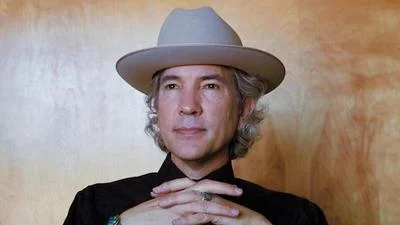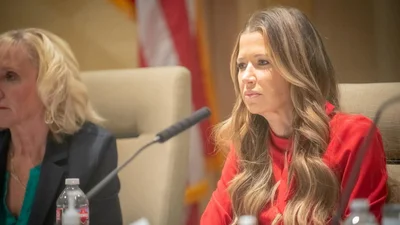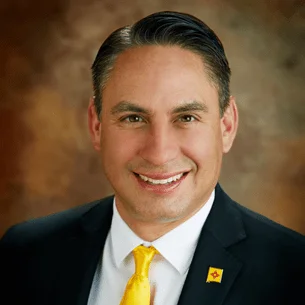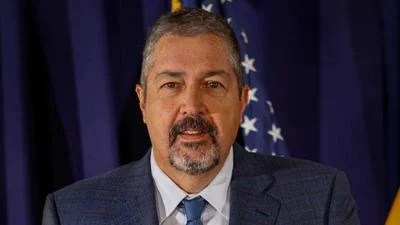When Steve Bohmbach suffered a stroke on March 18, he was at home watching television with his wife, Cindy. The event unfolded rapidly—Steve only realized what had happened after he was already in an ambulance on the way to The University of New Mexico Hospital.
“It happened on March 18; three o'clock in the afternoon,” Steve said. “My friends and I were supposed to go golfing, but it was too windy. So, I was sitting on the couch watching TV, and next thing I know I was on a gurney in the ambulance.”
Cindy recalled offering him part of her meal when she noticed something was wrong. “I just asked him, you want half of my hamburger,” Cindy said. “But he's going, ‘uh, uh, uh,’ mumbling, and I thought, ‘oh, he's just messing with me.’” She soon recognized his drooping face as a sign of a medical emergency.
Steve was taken to UNM Hospital’s Advanced Care Stroke Center where doctors determined he had experienced an ischemic stroke caused by a clot in the left frontal lobe of his brain. He underwent a thrombectomy procedure to remove the blockage.
Although surgery occurred quickly, Steve’s right side was significantly affected. Nearly seven months later, he continues to recover movement and sensation. “I can feel my fingers on my right hand, but they're numb, yet I still hope for the best,” Steve said. “I got out of the wheelchair about two months ago. I was in it for four months trying to get my leg to move just little by little.”
Both Steve and Cindy were surprised by the stroke since Steve maintained healthy habits and had no obvious risk factors apart from family history. “As far as his diet, it was good, he exercised, doesn't smoke, doesn't drink, all of that,” Cindy said. “We think it was genetic, based on his family history.”
Dr. Tarun Girotra is one of several neurologists at UNM Hospital’s Advanced Care Stroke Center—a facility that provides round-the-clock care for nearly 800 patients annually across New Mexico.
“We see this very commonly, and it is actually the most common cause of serious long-term disability,” Girotra said.
He emphasized that many people may not recognize stroke symptoms because they are often painless compared to heart attacks. Dr. Girotra encourages everyone to learn the acronym "BE FAST" for recognizing signs: sudden loss of balance or dizziness; vision changes; facial drooping; arm weakness; slurred speech; and noting when symptoms begin before calling 911 immediately.
Stroke remains one of the leading causes of death in the United States according to national health organizations such as the American Stroke Association (https://www.stroke.org/en/about-stroke/stroke-statistics). However, research shows that most strokes could be prevented through healthy lifestyle choices including regular exercise and monitoring personal risk factors like high blood pressure or cholesterol.
Girotra noted additional risks include smoking, excessive alcohol use or drug use as well as obesity—all factors that can increase chances for stroke events if not addressed through preventive care.
Recovery has been challenging for both Steve and Cindy since leaving hospital care. Cindy described her role supporting her husband at home: “It is a full-time job especially in the beginning...The caretakers have to take care of themselves because we get so wrapped up and we forget about ourselves which I learned the hard way by not sleeping or eating for three days early on; and I crashed.”
Despite these difficulties during rehabilitation—including participation in support programs like stroke camp—the couple praised their experience with UNM Hospital staff: “They can talk to you in layman's language,” Cindy said. “They make it sound simple and understandable where it could otherwise be very confusing.” She added that familiar faces among nursing staff helped create a supportive environment during recovery: “It turns out we were at stroke camp a couple weeks ago and some of the nurses that brought him in recognized him from six months ago...They're amazing.”
More information about stroke education resources is available through the UNM Advanced Care Stroke Center website.
If you or someone you know experiences possible stroke symptoms such as those described above seek emergency help immediately by calling 911.









